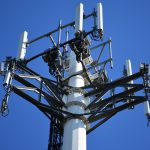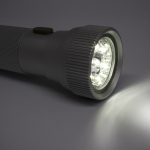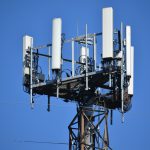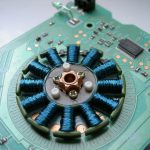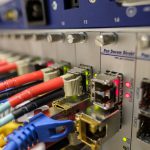
Photoelectric sensors are widely used in automation and control systems to detect the presence or absence of objects, measure distances, and detect changes in light intensity. They comprise a light emitter and a receiver to measure the amount of light that an object reflects or blocks. As an important aspect of industrial and commercial applications, photoelectric sensor systems are crucial for providing reliable and efficient detection of various objects. This article explains the crucial steps to set up a photoelectric sensor system using an Arduino.
Photoelectric Sensors System Using an Arduino: The Importance
A photoelectric sensor system using an Arduino can have several important applications, particularly in industrial automation and control. Some of the key benefits include:
- High Accuracy – Photoelectric sensors are known for their high accuracy, making them ideal for precise measurement applications. The Arduino analyse and processes the data generated by the sensor to ensure that the measurements are accurate.
- Energy Efficient – Photoelectric sensors systems are generally energy efficient, ensuring long-lasting services without consuming much power. The Arduino optimizes the sensor power consumption to increase its efficiency further.
- Easy to Install and Use – Photoelectric sensors are relatively easy to install and use, particularly when combined with an Arduino. The Arduino is used to program the sensor to perform specific tasks, which can help streamline operations and reduce human error.
- Versatility – The versatility of photoelectric sensors makes them an ideal choice for multiple industrial applications by detecting a wide variety of materials, including transparent, opaque, and reflective surfaces.
- Cost-Effective – Photoelectric sensors are generally affordable and often used to replace expensive sensors or systems. This can ultimately help businesses reduce costs and increase efficiency.
Essential Steps to Set Up a Photoelectric Sensors System Using an Arduino: An Easy Way to Learn
Following the steps below, one can easily learn to set up a photoelectric sensor system using an Arduino.
Step 1: Gathering Required Components
To set up a photoelectric sensor system, the following components are required:
- Arduino Board (e.g., Uno or Nano)
- Photoelectric Sensor Module (e.g., KY-010 or TCRT5000)
- Jumper Wires
- Breadboard
- USB Cable
- LED (optional)
Step 2: Connecting Components to the Breadboard
The first step is to connect the Arduino board to the breadboard using jumper wires, followed by joining the photoelectric sensor Arduino to the breadboard using jumper wires. Here is how we can connect the components:
- Connect the Arduino board’s GND pin to the breadboard’s negative (-) rail.
- Connect the 5V pin of the Arduino board to the breadboard’s positive (+) rail.
- Then, connect the photoelectric sensor module’s signal pin to digital pin 2 of the Arduino board.
- Connect the VCC pin of the photoelectric sensor module to the breadboard’s positive (+) rail.
- Finally, connect the GND pin of the photoelectric sensor unit to the breadboard’s negative (-) rail.
Furthermore, if you have an LED, you can connect it to the breadboard by connecting the anode (positive leg) of the LED to digital pin 13 of the Arduino board and connecting the cathode (negative leg) to a 220-ohm resistor. Lastly, connect the other end of the resistor to the breadboard’s negative (-) rail.
Step 3: Uploading the Code to the Arduino Board
Once all the components are connected, upload the code to the Arduino board. This code reads the digital signal from the photoelectric sensor module attached to digital pin 2 of the Arduino board. If the sensor detects an object, it will output a HIGH signal, which will turn on the LED connected to digital pin 13 of the Arduino board. If the sensor does not detect an object, it will output a LOW signal, turning off the LED.
Step 4: Testing the Photoelectric Sensors System
Once the code to the Arduino board is uploaded, test the photoelectric sensor system by placing an object in front of the sensors modules and observing the LED. When the object is detected, the LED should turn on, while the LED should turn off when the object is removed.
If the LED does not turn on, adjust the photoelectric sensors module’s sensitivity. This can be done by adjusting the potentiometer on the module. Turning it clockwise will increase the sensitivity while turning it counterclockwise will decrease the sensitivity.
Note: It is important to note that different photoelectric sensor modules may have different potentiometers/sensitivity adjustment methods. Therefore, referring to the specific module’s datasheet or manual is crucial.
Step 5: Customizing the Code for Your Project
The possibilities are endless, and the code can be employed as a starting point for more complex projects and can be customised according to the projects’ requirements.
The Final Words:
Setting up a photoelectric sensor system using an Arduino is a simple yet effective way to detect the presence or absence of multiple objects, measure distances, and control other components. With just a few components and some basic programming skills, it is possible to create a fully functional system that can be customised for a wide range of applications.






